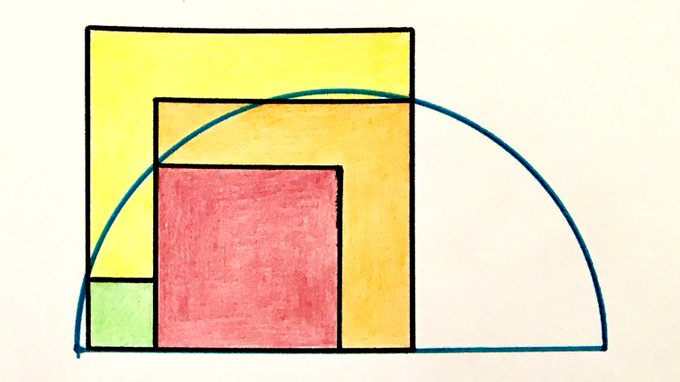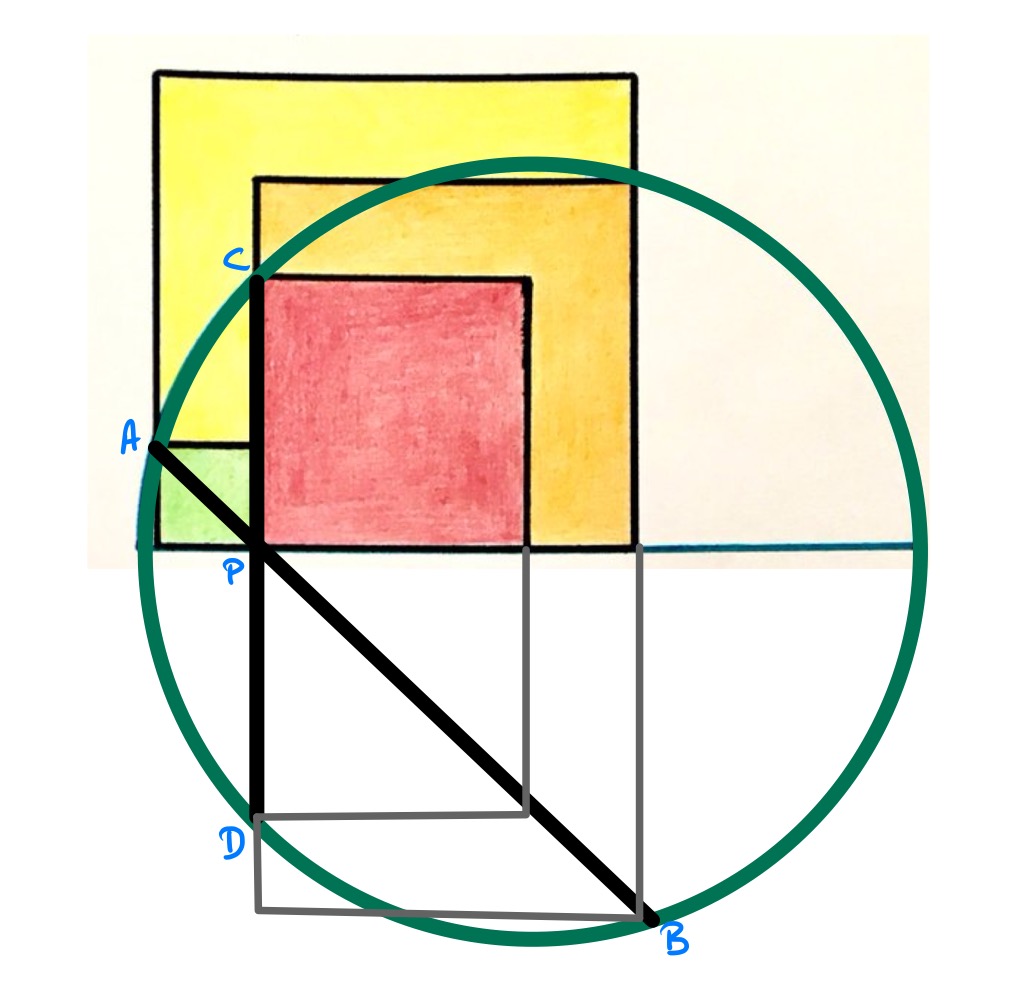Notes
four squares and a semi-circle solution
Four Squares and a Semi-Circle

If the biggest square has area , what’s the total area of all four squares?
Solution by Intersecting Chords
Let , , , and be the side lengths of the four squares in ascending order. Then .
Reflecting the diagram in the diameter produces the following diagram, in which is the diagonal of the smallest square, is the reflection of the diagonal of the second largest, and is the reflection of the side of the second smallest.

In this diagram, has length , and have length , and has length . Using the intersecting chords theorem, then, these lengths fit into the equation
Now, since , the area of the largest square is equal to:
Therefore, the three smaller squares have the same combined area as the largest. The total area is thus .